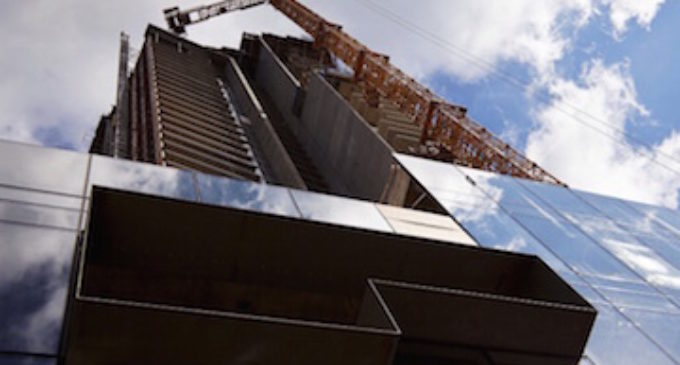Will Future Skyscrapers Be Glued Together?

FEATURE
Will Future Skyscrapers Be Glued Together?
Credit: New Scientist
MEDIA SPOTLIGHT – Glue is the future of architecture, according to architect Greg Lynn.
“Mechanical assembly is already waning in many industries,” Lynn told New Scientist. “An airplane now is glued together. A car now is glued together. Even a lot of appliances are being glued together.”
Such non-metallic composites as carbon fibre, fiberglass panels and other structural plastics are “lightweight, often much cheaper than traditional industrial materials and offer physically stronger systems for designers to work with,” writes reporter Geoff Manaugh of New Scientist.
Manaugh notes that composite materials are already used to manufacture high-performance yachts, wind turbine blades, large passenger aircraft such as Boeing’s 787 Dreamliner and even commercial spacecraft such as SpaceShipOne.
“These are fundamentally different material systems,” architect Bill Kreysler told New Scientist.
Kreysler said the connective strength of architectural adhesives can surpass that of mechanical connections such as bolts and screws.
“But composites are not well understood in the building industry – the invisible magic of glue is distrusted in favour of brute force,” writes Manaugh. “As a result, they have not yet been widely adopted.”
“Even when assembling a structure using carbon fibre panels, contractors will often still use screws, rivets or bolts. This is both redundant and expensive,” according to Manaugh.
“Glue would be much stronger than a bolt, especially when standing up to sheer forces.”
Architect Lynn thinks it is just a matter of time before skyscrapers are held together entirely by adhesives.
“The use of composites and adhesives could revolutionize engineering in every building type, ” Lynn stated. “It could change the way we design around natural disasters. By drastically cutting the weight of a building, you could stop it swaying so much during an earthquake.”
Lighter buildings are also cheaper, Lynn told New Scientist.
“If you can take 30% of the weight out of the upper section of a building by using lightweight composite materials, you could end up saving between 70 and 80% of the material in the entire structure,” he said.
Of course, there are drawbacks to composite structures.
“Most adhesives deteriorate rapidly in a fire and can even feed a blaze,” writes Manaugh. Web: NewScientist.com
Editor’s Note: Articles in MEDIA SPOTLIGHT are excerpts from publications which show the industry what the public is reading about fasteners and fastener companies.




There are no comments at the moment, do you want to add one?
Write a comment